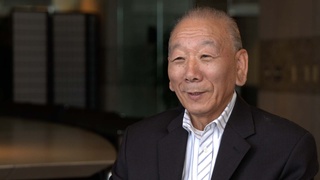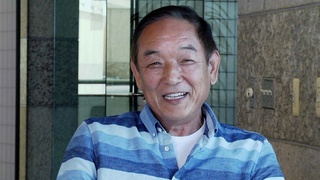Entrevistas
Working in America
First of all, my aunt's husband, my uncle, he was a big shot in a Shopping Bag, super market. So the president is my uncle's friend. The president sponsored me to come back to the USA. So I worked about a month and a half in Shopping Bag. But, I don't understand English, so every time the customer asked me, I go to the back room again. How many times, back room and front and back and front. Soon, I'm sick and tired, and also I feel so bad for customers, so I quit.
Same time, friend of mine came from West Los Angeles. He asked me, "hey how much you making money?" And I say, week, so much. And he says, hey gardener, much better than you are making money, so come in! So I went to Sawtelle, and started gardener's helper.
Then I made other, because too much tension and frustration and so, I quit gardener, so I went houseboy. About a year. I tried to learn English, but to me, I guess no brain, so I couldn't pick up English. I need money anyway, so I went back to Sawtelle, and I tried truck driver. I worked in a small papa-mama size grocery store...
Only thing I didn't do was dish washing. Washboy. And finally, I went back to the supermarket again, and I worked 28 years until I retired. That's my life.
Fecha: January 31, 2012
Zona: California, US
Entrevista: John Esaki, Yoko Nishimura
País: Watase Media Arts Center, Japanese American National Museum








